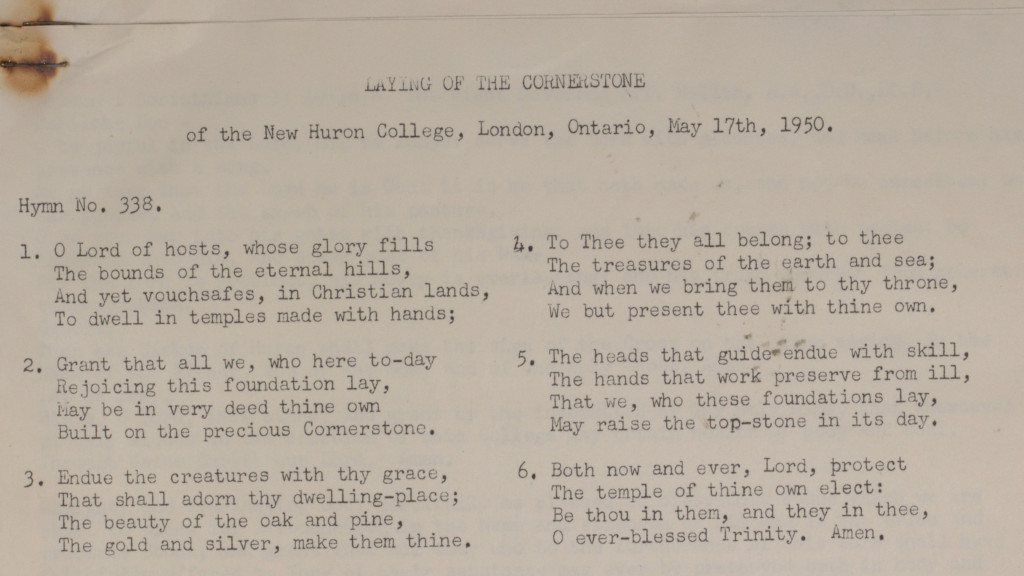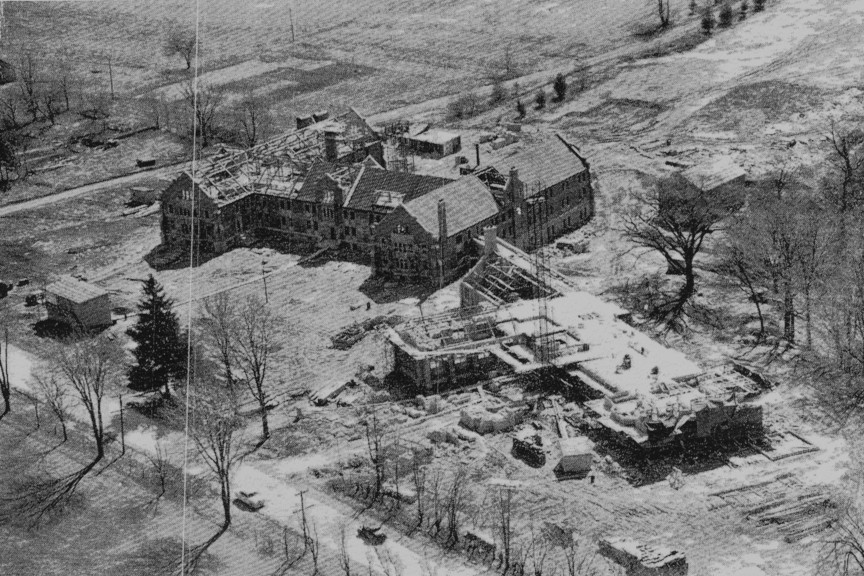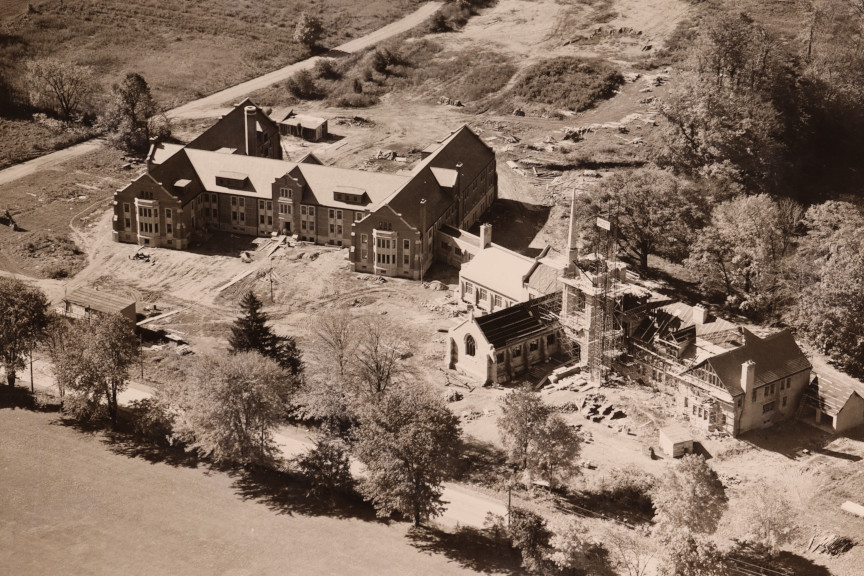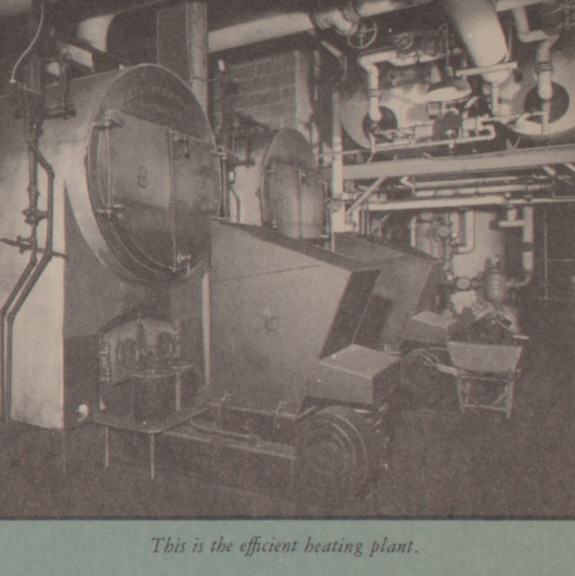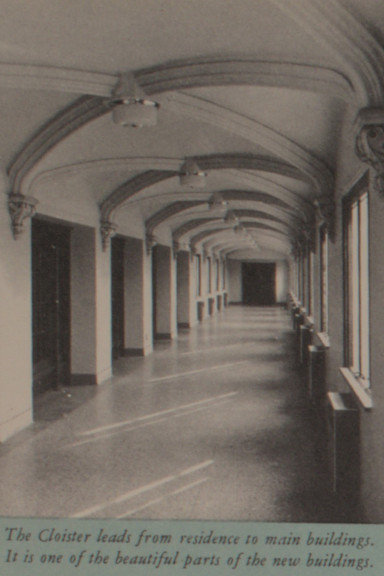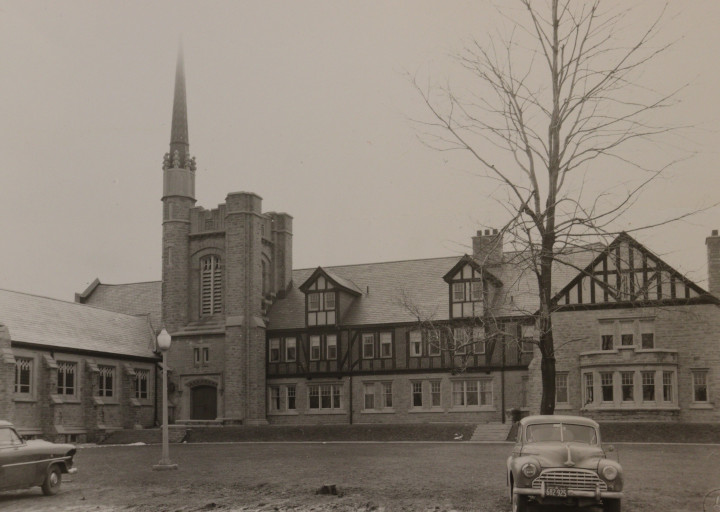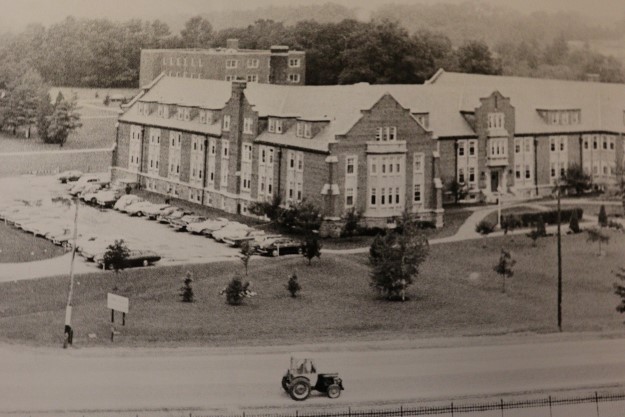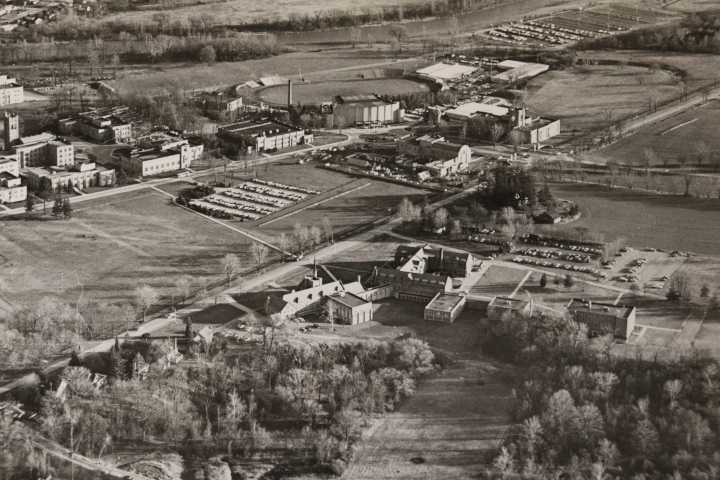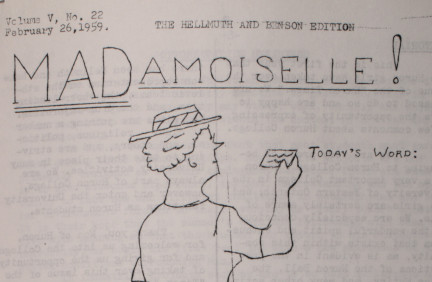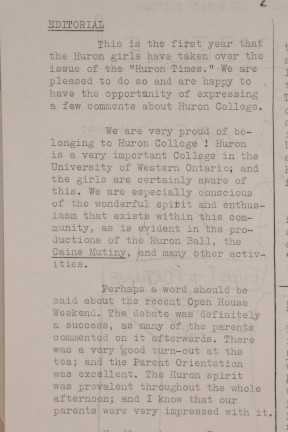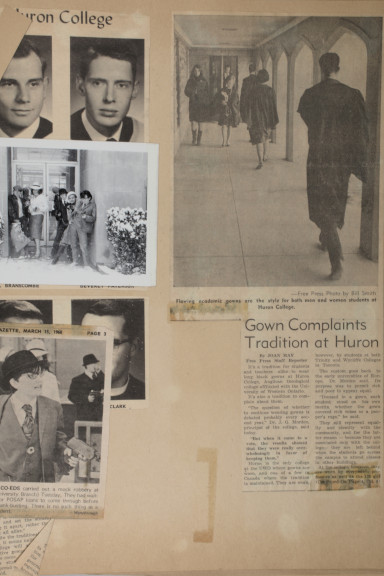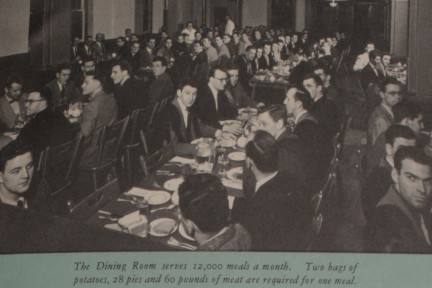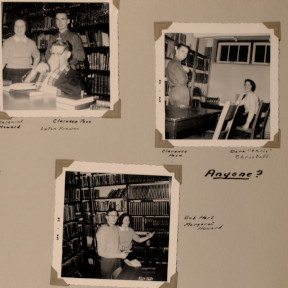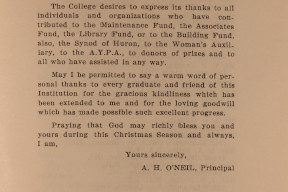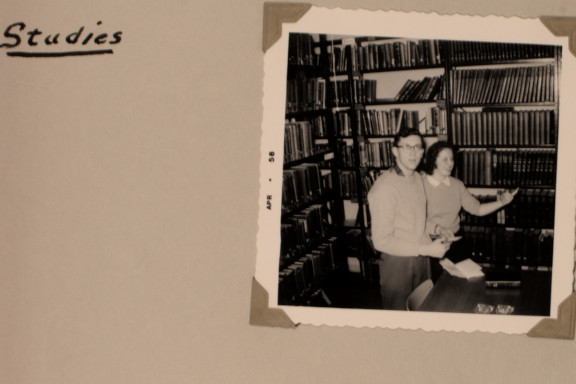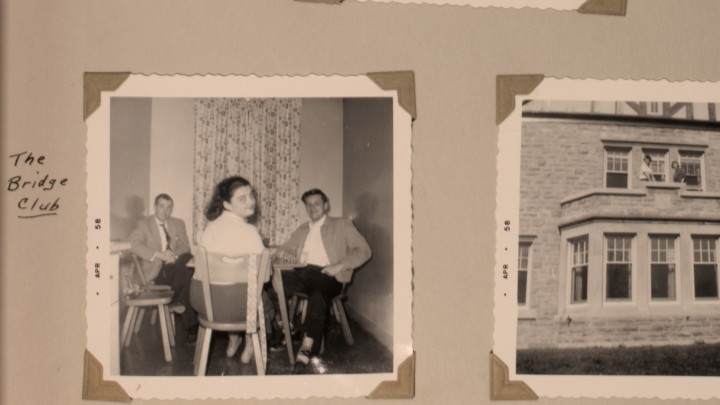
Student Experience: Interviews
George Powell
Edward Appleyard
Studying and Class Routine
“I always took six subjects; usually there were three hours a-piece. There might me one that was two, so you would have something like 17 or 18 hours of classes a week.” (5)
“You’d have supper, you’d have a break; you might go play some cards, or go for a walk, but generally speaking you’d either go up to your room and work, or down to the library and work. That would be a typical day.” (8)
“Since I had a full meal program, I was always [at Huron] for meals. Morning would start and the theologs were always in the refectory first. All you could smell with sardines—you’d go in there and my god, the theologs would have there sardines in there. We’d go in there after them—we would likely be in there after 8 o’clock. We would get porridge, bacon and eggs, you know, whatever you want.
If I had classes after, I’d simply keep my academic gown on and go up to the great hall to the class. Or, I’d go the new classroom if I was in there, or hustle across Sommerville Flats to the University with my books and go to class there. I’d come back for lunch at noon. I might have a break—my roommate, especially in the first year was always game for a nap after lunch. He’d say, ‘wake me up in time for English,’ or something of that nature. He might have a nap, I might review a couple of things I wanted to for the next class.” (8)
“At Huron, it was all one big, family, as far as I could remember.” (2)
Dining
“Yeah, the cafeteria was—I thought—run very well. It had a good variety of food; I was never dissatisfied with the meals that we got there—breakfast, lunch, and dinner, in my case. I can’t recall whether there was one or two sittings but for dinner, for instance, it was more formal. You had to be there at a particular time, at the table, then we stood up and recited Grace, then we all sat down and had our meal.” (5)
Residence Life
“if you went in the main door in the center, turned right, went down to the end of that hallway, and on your left was this other wing headed towards the back; that was always called Holy Alley. Holy Alley, because most of the theological students who were there had rooms down that particular alley. They put the down there, so they would be together and have some sort of congenial atmosphere. The rest of the building was almost all theological students. ” (4)
Anecdotes
Classroom Antics
“I can remember the windows cranked open and Dr. Morris was doing attendance—he said Mr. Elder because everybody on those days was Mr. Elder; it was never your first name—and ‘Mr. Elder not here.’ The next thing I knew, Norm had his horse’s head sticking through the classroom window, and everybody—everybody was laughing, except Morris who was looking at that attendance page and the rest of the class was all laughing away at Norm sticking his horse’s head through the window.” (7)
Bridge: “the grade-killer”
“You could even go to the common room on your floor in the middle of the night and find guys playing bridge. Bridge was likely the greatest killer of academic worth at the time. I tried to avoid it as much as I could. I liked to play bridge, but it became an obsession with a lot of people, and I actually knew some guys who failed their year from playing bridge all the time—bridge had actually taken over. ” (6)
Flooding
“[In 1955,] Ontario was hit by a Major Hurricane that came up out of the Gulf of Mexico, and it dumped a huge amount of rain on southern Ontario. in Toronto they particularly remember it because a lot of the rivers flooded. . . . But the result at Huron was that the basement rooms had window wells that opened up and let a bit of outside light into the room. That day, the window wells were, of course, filled with water. With that heavy, heavy rain.
That particular common room was flooded, and I can remember a whole bunch of us the principal of Huron at the time was Bill Coleman—Principal Coleman—and I can remember him a bunch of the students in there, mopping up water for all we were worth, to try to protect the furniture and things like that. I might even have a few slides the pictures that I took at the time . . . slogging around in the water trying to clean it up.” (5)
“Watch out—Golf Balls!”
“Most of us were at the university; we had to walk across Western Road to get there. You may not realize that at time the University buildings had sort of been the center of the campus and surrounding the university was a golf course. And so, as you walked across Western Road, through a fence, you were immediately on throughway of the golf course. As you walked across to get to the University, you did have to—at the right time of year, when the golfers were out—had to watch that there wasn’t anybody driving golf balls at you as you went across.
. . . Now, I seem to recall, very shortly after I left, the golf course realized that they would have to move because the university was expanding and wanted to expand its buildings. The golf course, moved down, oh, out towards Springbank Park, out along the river there, and, as far as I know, still there. . . . The golf course grounds were reverted wholly to the university. And buildings went up. One of the first buildings on the campus was the rather large library that was constructed there. It went in there on top of what had previously been a golfing area.” (9)
Remembering Huron College
“50 years after I graduated from my Honours program in 1961, the same drapes were still hanging in the library that I remembered from when I was there. I said, ‘my god, the Battle of Hastings—all over again…’” (9)
“Originally to me Huron was just a residence. But it became a very integral part of my life, very quickly. . . . I’ve been donating to Huron every year since I’ve started to work—which was 1962. I have donated every year, and I intend to continue doing that.” (9)
“I remember [Huron] very fondly. I can remember a lot of anecdotes, a lot of the people that I lived with at Huron, worked with at the university, and the profs that I had. All in all, it was a great experience—I wouldn’t have traded it for anything.” (11)
“Well, I’m sure Huron will have changed enormously since those days. For instance, its size; secondly, I think it calls itself Huron University College, now, I think, which implies it is giving a range of courses that is much broader than the purely theological courses offered in my day.” (8)
These excerpts are from interviews conducted with Huron College Alumni from the 1950s. For full length transcripts, please contact Dr. Thomas Peace: tpeace@huron.uwo.ca

